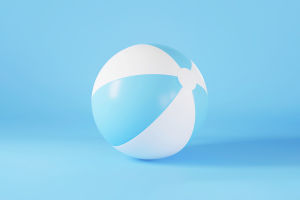A sailboat is a vessel that utilizes wind power to move through water, which is a commonly known fact. However, do you know the different types of sailboats that exist?
Sailboats have a history of over 5000 years and are one of the oldest forms of water transportation, following boats and rafts. They can be categorized based on the number of masts, type of boat, and head type.
The three-mast categories are sloop, two-masted sailing boat, and multi-masted sailing boat. The two boat types are flat bottom and pointed bottom sailing boats, and the head types are the wide head, narrow head, and pointed head sailing boats.
For sport sailing boats, the International Sailing Federation (ISAF) has classified them into three categories. The first category is keelboats, which are usually over 6.5 meters in length and have an iron or lead rudder in the lower part of the hull to stabilize the boat and reduce transverse movement.
Due to their large hull, excellent stability, and strong sails, keelboats can only be driven in deep water. Small keelboats can be manned by two to three people, while large ones need 15 or more people.
The second category is steerage board sailing boats, which are generally designed for one or two people and are 2-6 meters long. However, some large cruising steerage boats can accommodate four or more people. There is a slot in the middle of the hull for the steering board, which can be moved up and down as needed. The purpose of the steering board is to increase lateral resistance and reduce lateral movement.
Common steerage board sailboats include the OP sailboat, which is ideal for introductory sailing training due to its lightness, simple equipment, and flexibility in driving. The Laser Radial class, which Lijia Xu competed in during the Olympic Games, also belongs to the steerage class.
The third category is multihull sailing boats, which have no keel, less drag, smoother sailing, and can achieve faster sailing speeds in moderate wind conditions. America's Cup, which is an extreme pursuit of speed, has used hydrofoil catamarans in previous years.
Sailboats can also be classified based on size, usage, and the number of masts. For instance, size can be divided into small, medium, large, and super galleys; usage can be divided into racing and leisure sailboats, while the number of masts can be divided into single-mast sailboats, twin mast sailboats, and multi-mast sailboats.
Twin-mast and multi-mast sailboats are typically used for larger super galleys. For example, the world-famous Maltese Falcon is a three-masted sailing yacht.
Sailing has a long history dating back to 70 BC when the Roman poet Vigil detailed a sailing race from Troy to Italy in his narrative poem "The Aeneid." Since modern competitive sailing boats vary greatly in design, manufacturing process, and raw materials, uniform regulations were needed to ensure fair sailing competitions.
Thus, sailing class associations and rules were established in the early 19th century. After sailing was included in the second modern Olympic Games in 1900, it brought the sport into a period of rapid development both in scale and level. Sailing has been developing rapidly in developed countries worldwide, especially since the mid-20th century.
Japan was the first Asian country to develop modern sailing, and in the 1960s, the Japan Sailing Association formulated a long-term development plan for competitive sailing. In less than ten years, their 470 class for men and women reached an advanced level worldwide.


